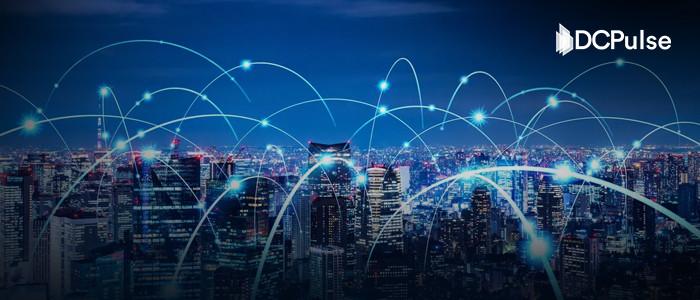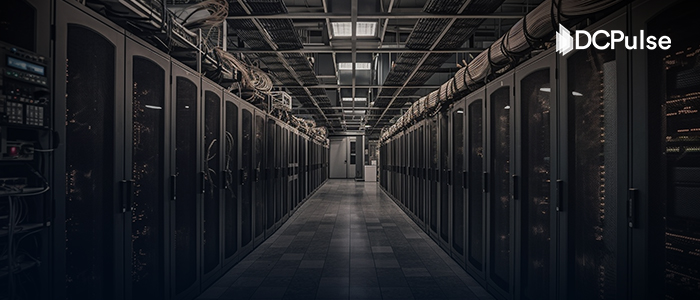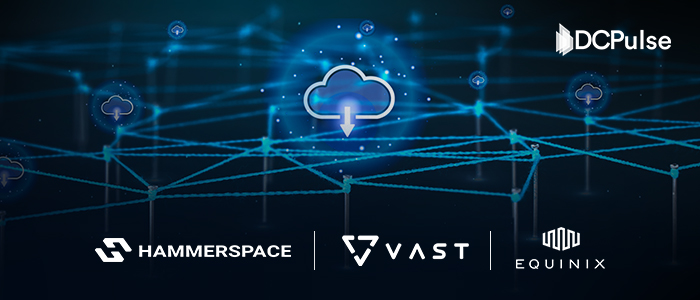Data centers are rising faster than ever, with over 10 GW of new capacity projected to start construction globally in 2025 alone. Their construction leaves a heavy carbon footprint, with cement, the binding agent in concrete, responsible for roughly 7-8% of global CO₂ emissions.
The challenge is clear: can the architects of the internet construct the next generation of data centers without fuelling the planet’s carbon crisis?
From Microsoft to AWS and Meta, the world’s largest tech companies are confronting a problem they helped create: the carbon footprint of concrete.
The race is on to reduce the embodied carbon in every ton of cement poured and every slab laid. This isn’t just about cutting emissions on paper; it’s about rethinking the very materials that make the digital world possible, from bio-based binders to AI-designed concrete mixes.
Microsoft’s Seaweed-Based Low-Carbon Cement
Microsoft is leading one of the most ambitious efforts to tackle the carbon footprint of concrete with a simple but revolutionary idea of replacing a portion of the limestone traditionally used in cement with marine algae. This naturally abundant material absorbs CO₂ as it grows, resulting in a concrete mix that can cut embodied carbon by roughly 21%, reducing the emissions tied to each data center build without compromising strength or durability.
The combination of biology and technology makes this breakthrough particularly compelling. AI and machine learning are used to optimize the blend for performance and environmental impact, running thousands of iterations in virtual simulations before a single batch is poured.
The research, led by Eleftheria Roumeli, assistant professor of materials science and engineering at the University of Washington. She said,
“This new strategy is quite the leap from traditional approaches.”
Microsoft’s innovations go beyond seaweed cement. The company is experimenting with microalgae limestone concrete, aiming to reduce the embodied carbon by more than 50%, while also exploring mass timber builds that cut emissions by up to 65% compared to conventional precast concrete.
In addition, through its Climate Innovation Fund, Microsoft has invested in CarbonCure, which injects CO₂ into concrete to strengthen it and reduce emissions, and with Prometheus Materials, which develops bio-cement using microalgae to produce zero-carbon concrete.
By integrating data-driven insights with sustainable materials, Microsoft is creating a scalable model for the future of low-carbon construction, one that could be replicated by other companies as well.
This innovation isn’t just an experiment; it’s a statement that the carbon problem in construction can be solved through creative material design. It sets the tone for the broader industry effort, showing that cutting-edge technology can extend beyond software and into the very foundations of our digital infrastructure.
AWS and Meta’s Green Concrete Strategies
Amazon Web Services has taken a pragmatic, region-focused approach to cut emissions in data center construction. By partnering with local suppliers such as American Rock Products in Oregon, the company incorporates industrial byproducts like slag and EAF steel into its concrete mixes, eliminating unnecessary concrete where possible, while achieving 23% CO₂ reduction per batch, saving roughly 600 tons of CO₂ in individual projects.
Applied across 43 facilities, these measures have cumulatively cut 22,000 tons of CO₂, demonstrating that incremental, regionally tailored innovations can have a large-scale impact when deployed systematically.
Meta, in contrast, is leveraging AI to optimize concrete mixes. Using machine learning pipelines, the company designs ECOPact blends that balance strength and sustainability, achieving up to 35% embodied carbon reduction.
By open-sourcing the underlying frameworks via BoTorch and Ax, Meta is enabling industry-wide adoption, encouraging other builders to benefit from its AI-driven innovations.
Beyond concrete, Meta is also piloting mass timber structures, which have achieved 41% reductions in embodied carbon, showing that material innovation can extend beyond cement alone.
Together, AWS and Meta exemplify how Big Tech is turning data centers into living laboratories for sustainable construction.
From localized material strategies to AI-designed mixes and timber pilots, these companies are proving that low-carbon infrastructure is both achievable and scalable, setting a benchmark for the industry.
The OCP Green Concrete Initiative: A Collaborative Leap
Beyond individual company initiatives, Big Tech is increasingly exploring collaborative approaches to decarbonizing construction. A standout example is the Open Compute Project (OCP) Green Concrete trial, a joint effort involving AWS, Microsoft, Meta, Google, and engineering partner WJE.
The trials have demonstrated that innovative concrete formulations can achieve more than 50% reduction in global warming potential (GWP) per cubic yard, a remarkable improvement over conventional mixes.
The significance of this effort extends beyond numbers. It represents a form of cooperation and competition at the material level; companies that typically compete in cloud and hardware are now sharing knowledge, testing frameworks, and material innovations to tackle a common environmental challenge.
By combining resources and expertise, the OCP trial signals that sustainable construction can be accelerated through collaboration, providing a roadmap for the industry to adopt low-carbon materials at scale.
Making Low-Carbon Concrete Work at Scale
Demonstrating low-carbon concrete in a lab or pilot project is one thing; scaling it across the construction ecosystem is another. Key to this effort are partners like Holcim, whose EcoPact and ECOPlanet product lines bring sustainable concrete solutions to market at scale.
Using AI-driven mix design tools, Holcim optimizes each batch for performance, strength, and minimal carbon footprint, making it easier for builders to adopt low-carbon concrete without trial-and-error experimentation.
Scaling also depends on circularity in materials. Fly ash, slag, recycled aggregates, and bio-binders are increasingly incorporated into mixes, reducing reliance on virgin cement and cutting embodied carbon across every project.
These strategies aren’t limited to hyperscale data centers; they provide a roadmap for broader construction adoption, allowing offices, hospitals, schools, and infrastructure projects to benefit from the same innovations driving Big Tech’s low-carbon facilities.
By integrating AI, circular materials, and supply chain partnerships, this approach demonstrates that sustainable construction can be both effective and scalable.
The industry is no longer working alone; it is creating a connected ecosystem where innovation, collaboration, and technology work together to cut concrete’s carbon footprint.
The Future of Concrete: Self-Healing and Low-Carbon Solutions
While Microsoft, AWS, and Meta have led the way in using greener concrete, the construction industry is now entering a new phase of innovation that could cut more carbon and change how materials are made.
Biochar, a carbon-rich residue from organic biomass, is gaining traction as a cement additive. Studies show that adding a modest 1-2% by weight can boost concrete’s strength by about 15% while reducing embodied carbon. In one instance, beefing up concrete with engineered biochar delivered a 60 kg CO₂ offset per cubic yard of ready-mix, all while enhancing hydration and mechanical strength.
Australian researchers even turned used coffee grounds into biochar to replace 15% of concrete's sand content, yielding 30% stronger mixes and cutting cement demand by up to 10%
Fungi are not just for nature documentaries; they’re used for designing buildings too. Mycelium (the root-like structure of fungi) can be grown into panels, bricks, or composites with inherent qualities such as insulation, biodegradability, and structural integrity.
In Queensland, researchers crafted bamboo and mycelium panels for building facades, merging strength with low-carbon credentials.
Mycocrete, developed by scientists in Newcastle, uses knitted molds and fungal networks to produce concrete-like materials, strong, adaptable, and compostable.
Now, imagine concrete that can mend itself. Self-healing technologies embed mineralizing bacteria or engineered microbes into the mix, enabling cracks to seal over time. Tests reveal these formulations can recover significant strength and resist harsh conditions like water, acid, or heat.
Researchers are also investigating fungal self-healing agents that precipitate minerals to close cracks naturally.
Building the Future, One Low-Carbon Block at a Time
The first part of this series showed the problem: cement and concrete account for 7-8% of global CO₂ emissions, and data center construction is only making it worse. This chapter shifts the focus to solutions.
From Meta’s AI-designed mixes to the OCP green concrete trials, the story is no longer about small experiments; it’s about industry-wide change in billion-dollar projects. Tech companies are no longer passive consumers; they are early adopters and drivers of a cement revolution.
The arc between these two articles makes one thing clear: the future of digital infrastructure will be written not just in code and servers, but in the chemistry of the very foundations it stands on. The big question now is whether innovation can move fast enough to match the skyrocketing demand for concrete in the AI era.





